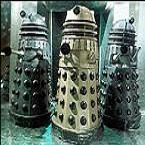Alby
Posts: 4855
Joined: 4/29/2000
From: Greenwood, Indiana
Status: offline

|
quote:
Originally posted by Paul Vebber:
To paraphrase Ian Hogg in "The guns - 1939-45"
Field artillery up to 15cm or so is organic to the warfighting formation and has as its primary purpose the direct aid of the infantry in the particular battle afoot...It is the job of the heavy artillery to harrass the enemy artillery, known AA positons, distant crossraods and railheads, forming up points for armor and other such targets. Its ability reach well behind the lines to such targets is indespensible to the interdiction of enemy movements and denying him the ability to mass for an attack.
You can also check pp 97 and 109 fo Hoggs "Barrage" for discussion of severe ammunition shortages among US artillery, particualrl in Italy and after the Breakout in France. Even a few weeks after teh D-Day landings, artillery batteries were warned about indiscriminant use of ammo and to "make sure you don't use 3 rounds if 2 will do the job". In 44 in Italy 155's were limited to 11 rounds per day for a significant period due to ammo shortages for example.
You can do a little back of the envelope figuring and if an 8in round with powder was ~250lbs that is 8 per ton, and a 2 and 1/2 ton truck could carry about 20 rounds - say 25 if you bent the sprngs a bit, so if you had 6 guns firing a bit better than 1 round per minute, you had a battery of 6 guns expending maybe 400 rounds an hour, requiring an hourly convoy of 16 trucks to supply or if firing continuously 384 truckloads of ammo per day. A truck convoy over a 3 and half miles long. That would be a rather serious logistics drain for 1 battery.
In one battle preperation a US Corps in the attack in Italy was provided with 18 batteries combined of 7.2 in, 8 in Gun, 8in How and 240mm How - and it took them over 3 weeks to amass the ammo to fire a 4 hour barrage. That was the normal operating mode for heavy artillery.
But I'm sure Ian Hogg is a tool of the anti American conspriacy keeping the real truth of how direct support from 8in guns won the war under wraps.
As to the "Artillery casued all the casualties" that is true and the vast majority of those were caused not by 8in guns, but lowly 81mm mortars. The fighting men of World War 2 were not daily in death grapple with the enemy, but actually in SP:WaW style engagments fairly infrequently (theater and timeframe dependant of course).
(Macdonald's "Company Commander" gives what is widely considered a generic view).
But the one constant day in and day out was artillery fire, everywhere up and down the front - especially mortars that would be fired if anyone tried to come or go from the front line trenches in a careless way. Those onsey-twosey casualties, day after day, all along the front, added up to be the primary cause of death.
Artillery during engagements tended to be used as area denial or flank protection because movement was difficult if not impossible - even to armored vehicels throught the beaten zone. Those pesky mortars were the primary killers in company and battalion level engagements.
There will never be complete agreement on what weapons should go where in a space limited OOB like the Germans. The Nation button can help that...
That's the last I've got to say on the subject.
If folks can find references to contradict the premise of Mr Hogg, then I'll be glad to look, but in reading over 15 books on WW2 artillery I have not found it. Maybe I read the wrong books...
[This message has been edited by Paul Vebber (edited March 08, 2001).]
Now this is what I call a good post!
Documentation, gotta luv it, well done paul!
Alby
_____________________________
|
 Printable Version
Printable Version









 New Messages
New Messages No New Messages
No New Messages Hot Topic w/ New Messages
Hot Topic w/ New Messages Hot Topic w/o New Messages
Hot Topic w/o New Messages Locked w/ New Messages
Locked w/ New Messages Locked w/o New Messages
Locked w/o New Messages Post New Thread
Post New Thread